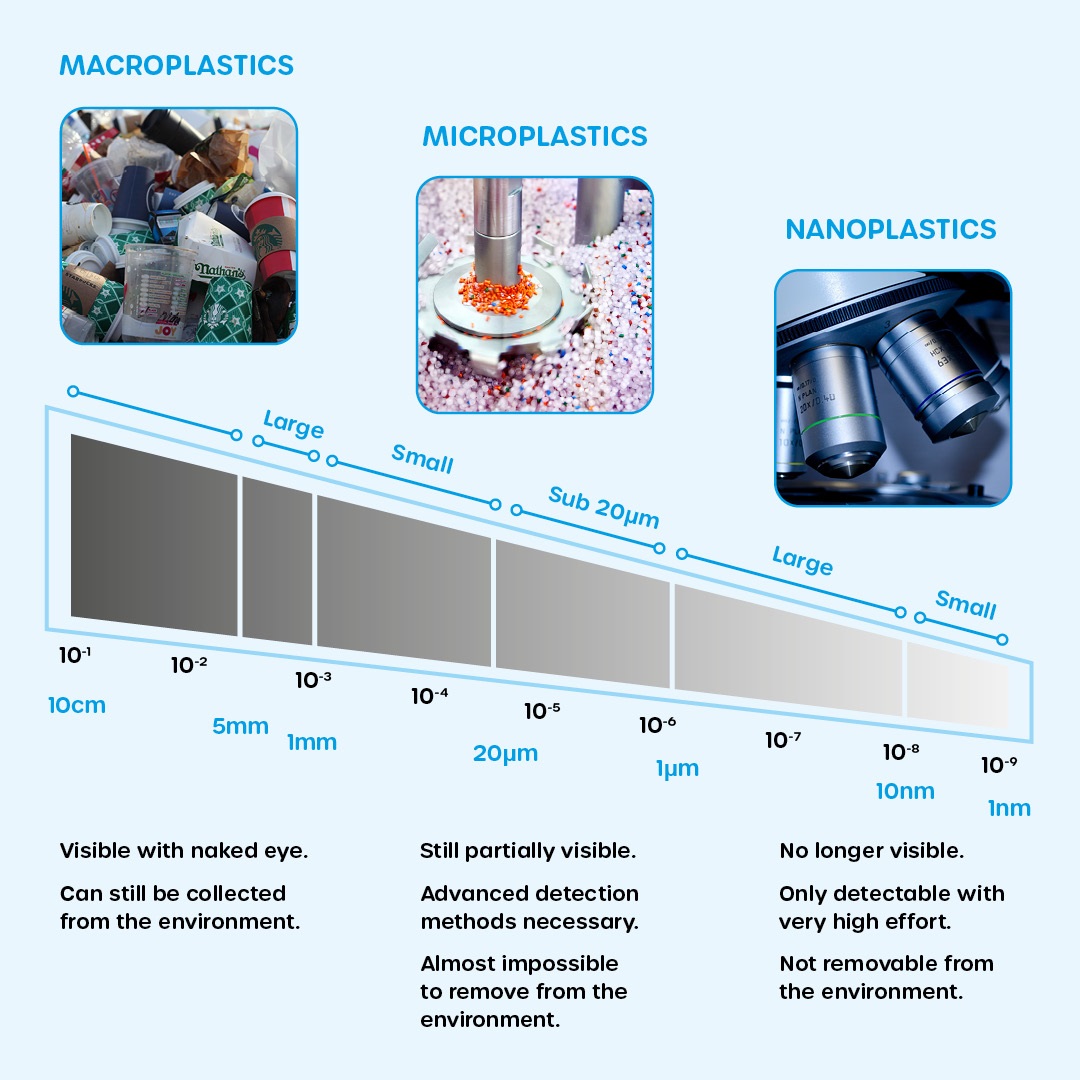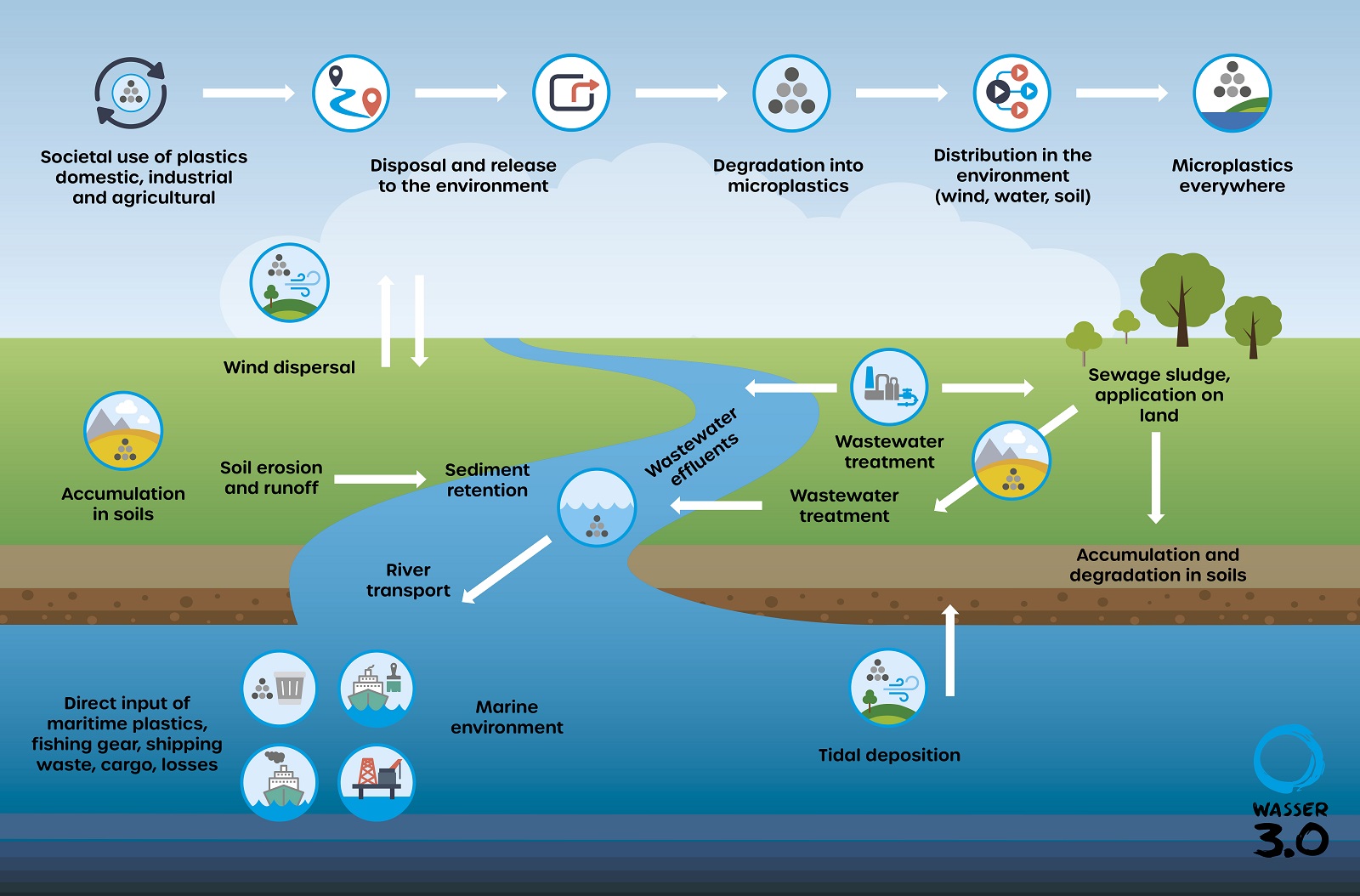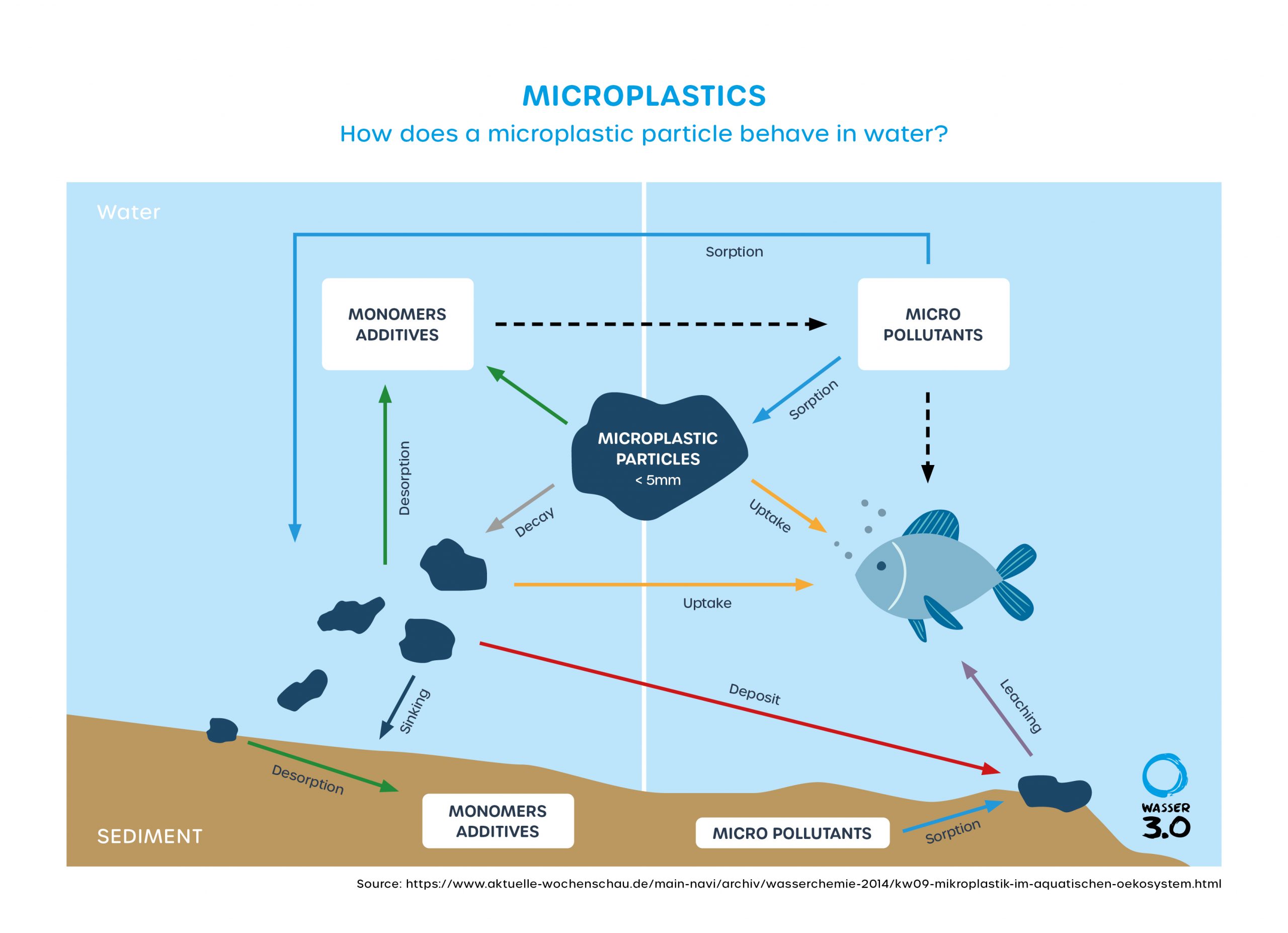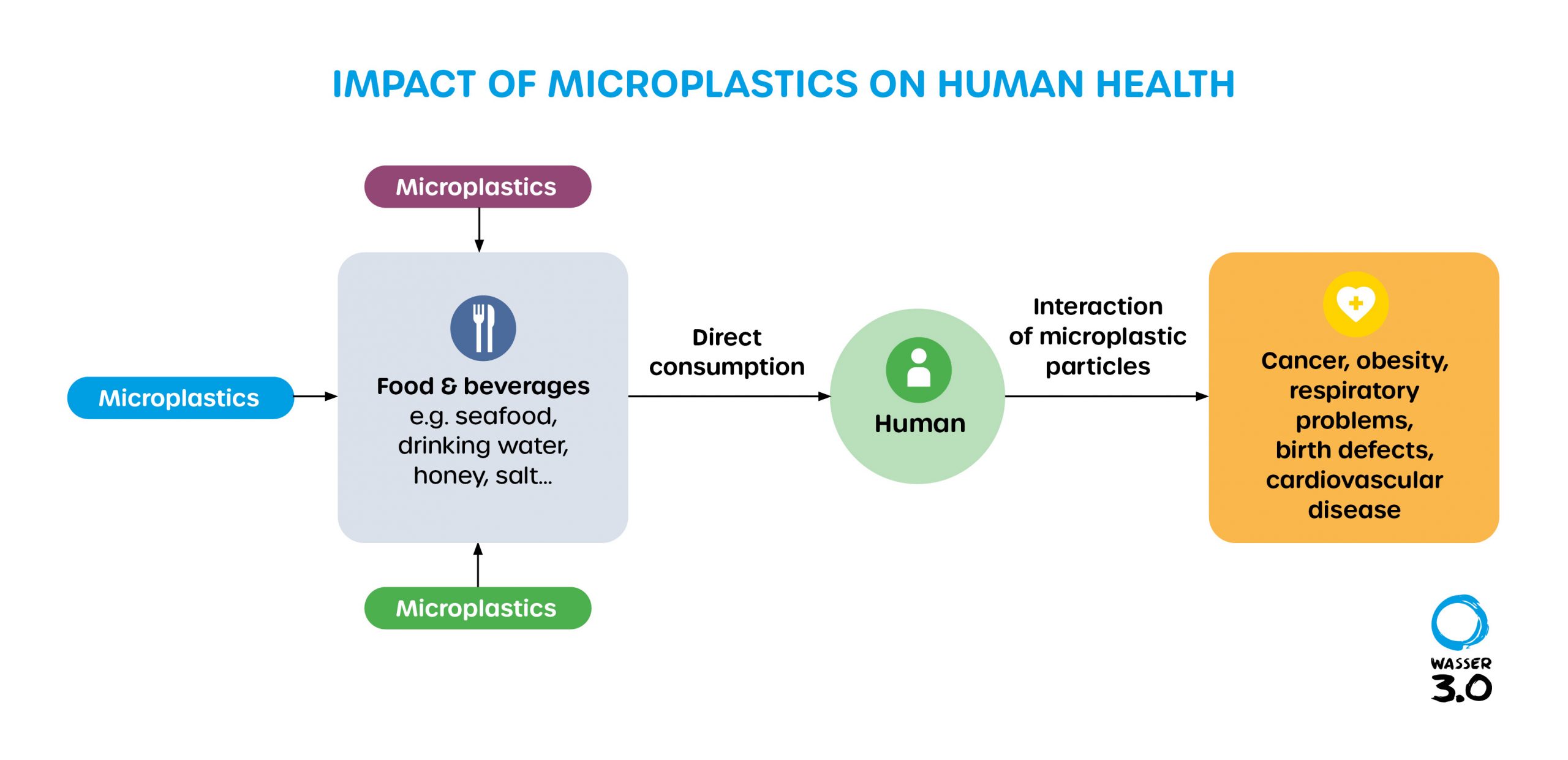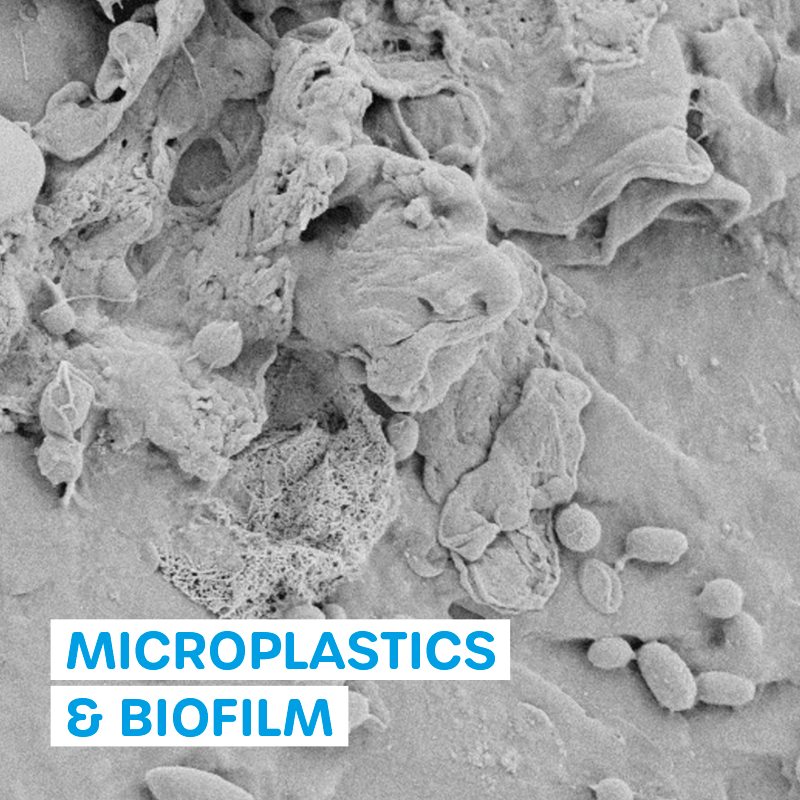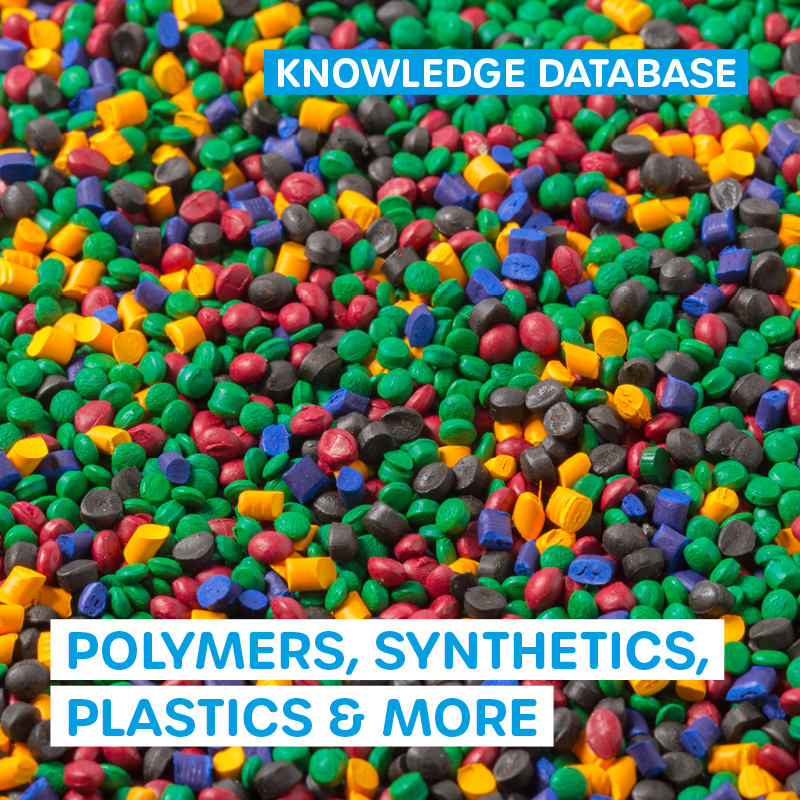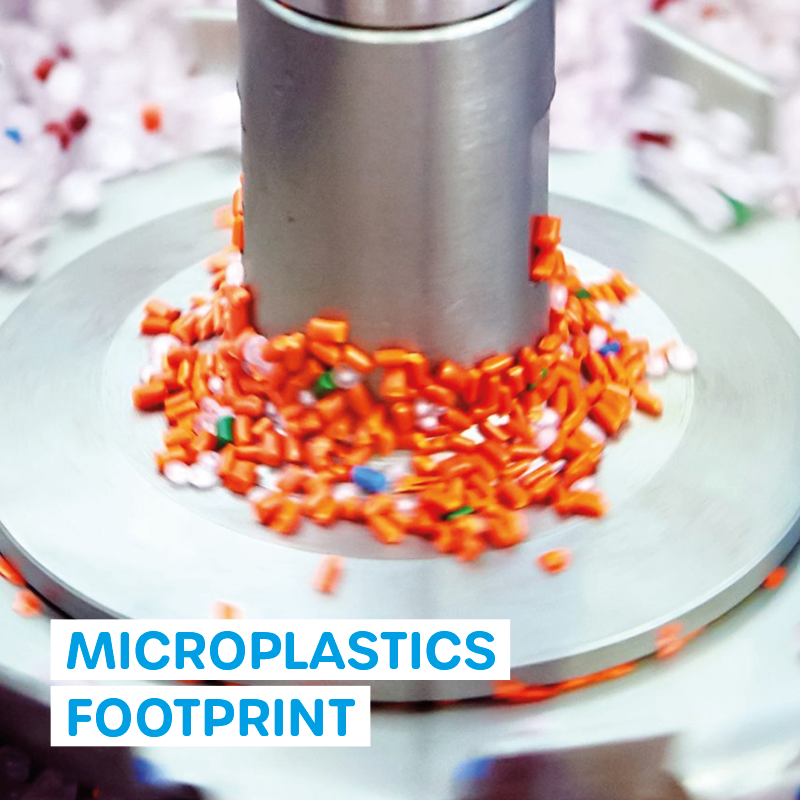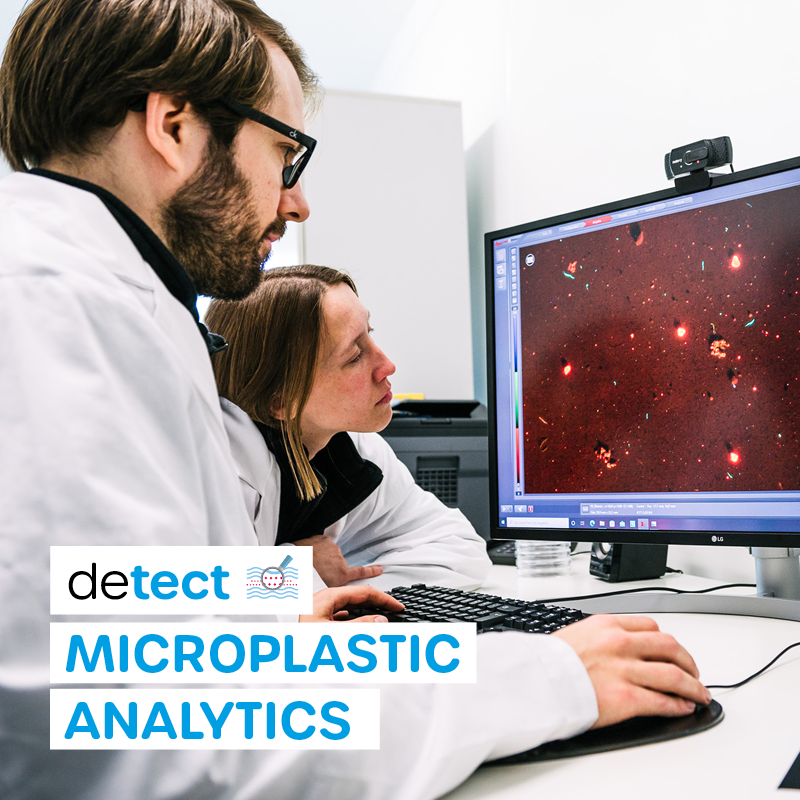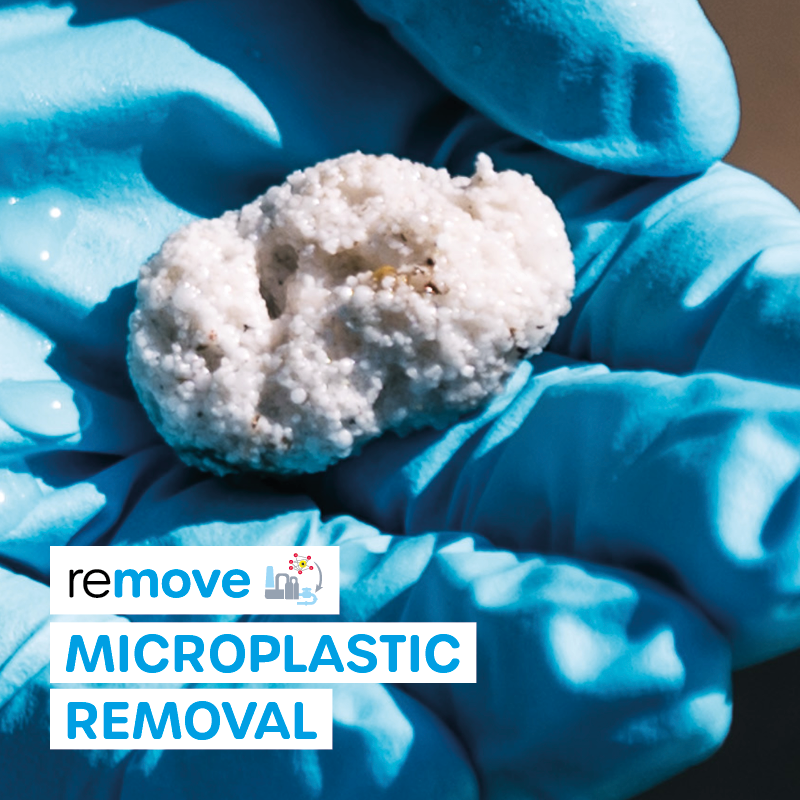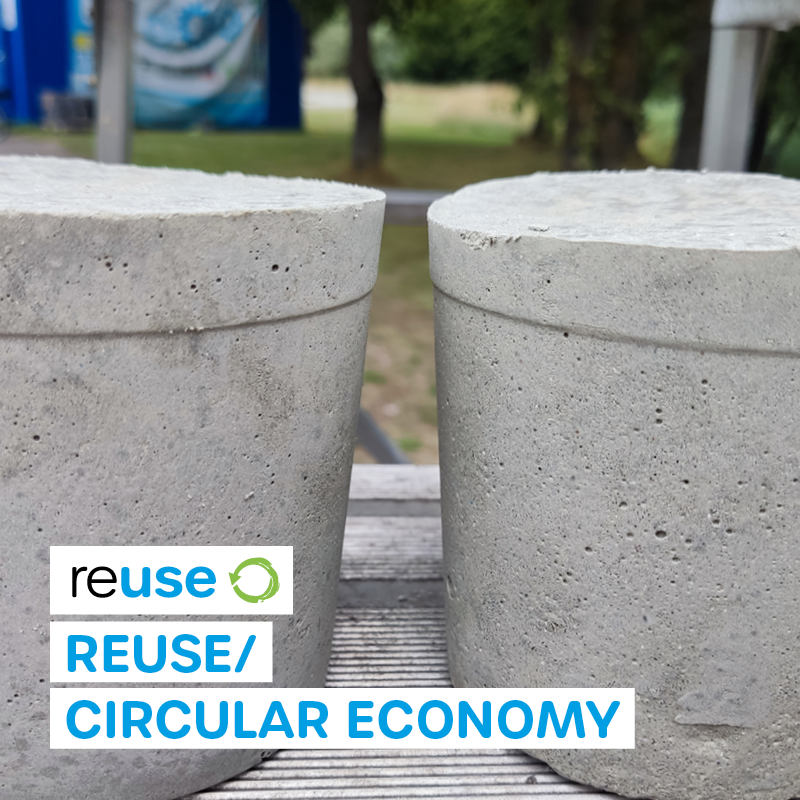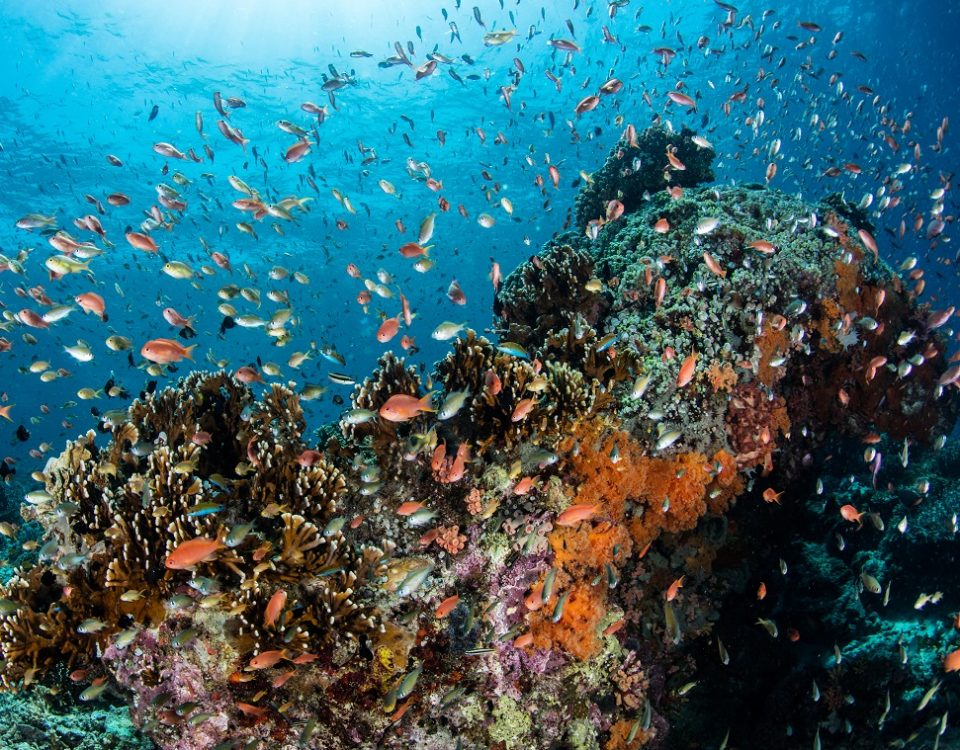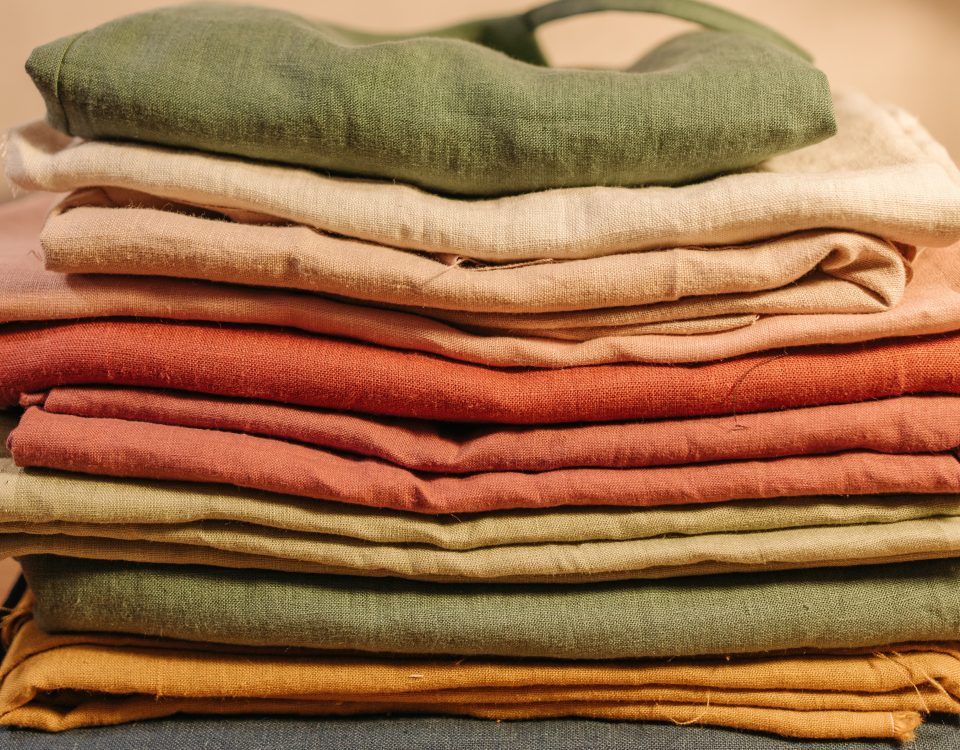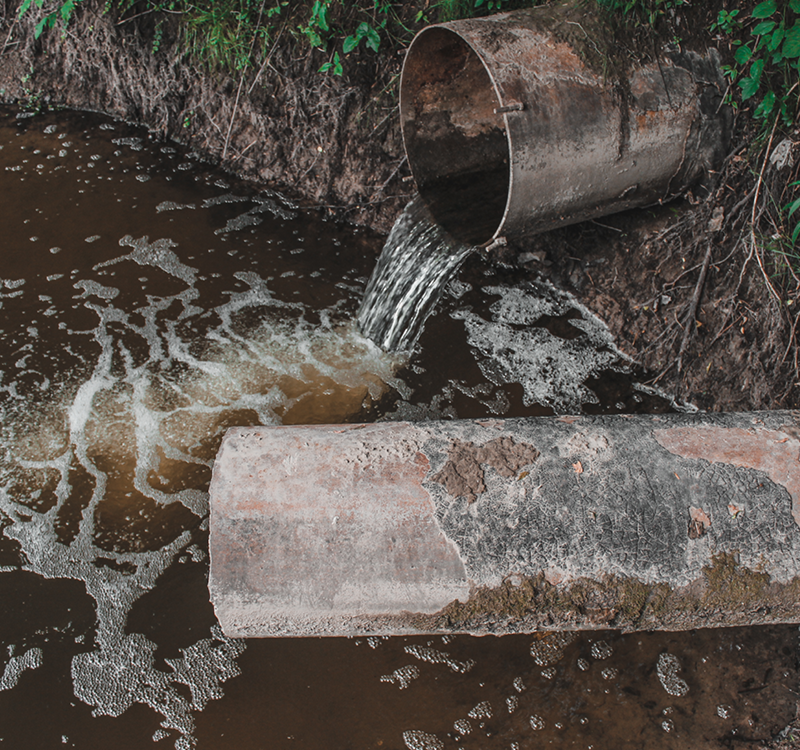
Microplastics
How it all began
Since the beginning of industrial mass production in the 1950s and the steadily increasing plastic production since then, microplastics have been distributed unhindered and uncontrolled in the air, water, and soil. They are classified as a tiny, invisible danger. The inconspicuous plastic particles threaten our environment and health. From the oceans to the food chain, they get into everything and harm wildlife and ecosystems. But how is microplastic actually produced? And what risks does it pose to humans and the environment? Our knowledge database provides answers.
YouTube content is currently blocked to protect your data. By unblocking the video, you accept YouTube's privacy policy.
More informationWhat is microplastic?
Microplastics are tiny particles of synthetic polymers and plastics and their products that are less than 5 millimeters in size.
Microplastics can either be intentionally added to products, for example in cosmetics or cleaning products, or be a waste product from the decomposition of larger plastic parts.
Microplastics enter the environment through many different pathways, where they are difficult to degrade and can pose a potential threat to wildlife and human health.
If we want to understand what is behind the term and research field of microplastics, we have to direct our attention to the way we deal with plastics: from their production and use to their disposal or reuse.
What types of microplastics are there?
Primary microplastic type A categorizes and considers microplastics as a chemical. This category includes the types that are added directly to products (e.g., personal care products, cleaning agents, paints, etc.). This component is already frequently being replaced by water-soluble polymers ("liquid microplastics"). Products are then often advertised as "microplastic-free" or "without microplastics."
The category primary microplastic type B includes plastic particles that are generated during the use of plastic products and are directly (without detours) introduced into the environment as microplastics. Examples are tire abrasion or clothing fibers from synthetic clothing.
Secondary microplastics include all microplastic particles that are created by the slow decomposition of large plastic parts or plastic waste in the environment. This can happen due to any kind of external influences, e.g., UV radiation, bacteria or also friction.
What are the properties of microplastic?
The smaller the particles, the higher the probability that they will be absorbed into the organism. The probability of uptake is additionally determined by the hydrophobicity as well as the charge and functionalization of the particle surface.
Low hydrophobicity and a negative surface charge lead to higher absorption. Furthermore, it is assumed that a protein corona forms on the particle surface due to the accumulation of biomolecules, which also strongly influences the uptake and transport behavior in the body.
How does microplastic get into the environment?
In general, a distinction is made between indirect and direct input pathways. Indirect input pathways are found when plastic objects or plastic waste in the environment break down into smaller and smaller components due to UV radiation, oxidation and/or mechanical effects.
This is how millions of microplastic particles are created in our ecosystems. Depending on their individual composition (size, weight, density), they disperse quickly or slowly in water, soil and air.
Microplastics can also enter the environment directly: Through tire abrasion, synthetic textile fibers released when clothes are washed, personal care products and cosmetics such as scrubs that contain microplastic particles. Industrial wastewater is also one of the major sources of input.
Proximity to heavily populated areas and inadequate waste management lead to particularly high levels of contamination. Point sources, such as sewage treatment plants or the plastics industry, are also important influencing factors. Furthermore, contamination with microplastics is influenced by transport processes such as wind, water currents, ebb and flow and surface runoff from rain.
In general, limnetic ecosystems are more contaminated with microplastics than marine ecosystems because the enormous volume of marine ecosystems allows microplastics to disperse more widely. Plastics and microplastics accumulate in so-called "garbage patches" by converging ocean currents in the oceans.
However, microplastic contamination of up to 12,000 particles / m³ could also be detected in Arctic Sea ice. Thus, it serves as a temporary sink in the microplastic cycle, since the microplastic is released again when the ice melts.
Contact lenses are also becoming an increasing problem. American researchers have found that up to 15 percent of the 45 million contact lenses sold in the U.S. each year are disposed of down the toilet.
What are the most commonly discussed sources of microplastic?
How hazardous is microplastic?
A potential risk for organisms is posed by additives, such as plasticizers, PFAS and other chemical compounds, which are classified as potentially harmful or hazardous in more than 50% of plastics, including commercially available materials such as polyethylene and polypropylene.
In addition to polymers, these are components of microplastic particles in a wide variety of concentrations and compositions. They are released into the environment or transferred directly to the organism when ingested.
In addition, due to its hydrophobic character and high surface/volume ratio, microplastics can absorb organic pollutants such as polyaromatic hydrocarbons or polychlorinated biphenyls as well as heavy metals from the environment, transport them and release them again when they are absorbed into the organism. This is also referred to as microplastic as a transport vector. Microplastics can be taken up from the environment by organisms through confusion with food or non-selective ingestion.
The health risk becomes higher, among other things, the smaller the microplastic particles are (nanoplastics) and the easier they can migrate through tissues and cells.
What is the impact of microplastic on biodiversity?
Microplastics in soils, sediments and freshwater could have long-term negative impacts on ecosystems. The accumulation and degradation of plastics in soil vary and depend on the type of plastic used (oxo-degradable plastics are of particular concern) and the occurrence of a range of climatological, biological, and anthropogenic factors (UV radiation, microbiota and tillage).
What impact do microplastics have on the climate?
How do microplastics get into our bodies?
Microplastics enter the human organism via the food chain, contamination of food through abrasion of plastic packaging or through contamination of the air we breathe. Drinking water, especially water from plastic bottles, is also an important factor.
Microplastics can be ingested by organisms from the environment through food confusion or non-selective ingestion and can be transferred to humans when consumed. In organisms that live in water, particularly very small plastic particles can enter the bloodstream directly through the gills.
The persistence of microplastics in combination with increasing plastic and microplastic inputs into the environment, as well as the continuous fragmentation of plastic already released into the environment, lead to an ever-increasing burden on the environment and thus also on humans. The ecotoxicity of microplastics depends on their shape, size, and density. While denser microplastic particles sink to the bottom of water bodies, those with lower density float on the water surface and can be mixed with food by invertebrates, often with severe consequences for the organisms and their predators.
Because microplastics can penetrate multiple organs, ingestion can lead to oxidative stress, which can trigger inflammatory and allergic reactions and, in very severe cases, lead to cancer or death. For a pollutant to pose a health risk, a combination of exposure and risk potential must be achieved, and the risk potential of microplastics has not been adequately studied to date.
Various studies have already demonstrated numerous harmful effects of microplastics on the human organism. So far, there is a lack of well-founded statements on the amount of intake that poses a health risk to humans. In addition to the different sizes of the polymer particles, their chemical composition and their behavior in the body/organism must also be considered.
How much microplastics do we consume?
There are numerous reports about where microplastics have already been found. A large number of studies have been carried out in recent years in which microplastics have been detected in food. A widespread statement is that we eat, drink, and breathe 5 g of microplastic every week – the weight of a credit card.
Since microplastics research to date has focused primarily on the aquatic environment, most studies in the literature are on exposures to food products such as fish and seafood.
The microplastic accumulates primarily in the digestive tract. Therefore, the contamination of fish and seafood that are consumed with the digestive tract, for example mussels or smaller fish such as anchovies or sardines, is to be regarded as particularly problematic. The highest microplastic contamination levels are found in "filter-feeders" such as mussels, which filter plankton from water to feed. For this purpose, they filter large quantities of water and cannot select between plankton and microplastics.
Microplastics have also been detected in other foods such as sea salt, honey, sugar, beer, and mineral water.
Note: These studies are based on different detection methods, and the results vary widely. In addition, most of the studies are always random samples, so that it remains unknown whether the quantities are constant or whether variations occur due to water treatment, machinery, processes, etc. or due to the analytical methods.
Which pathways do microplastics take in the organism?
Since there are no direct studies on the transport behavior of microplastics in the human body, this is derived from experiments with mammals. The findings are not very detailed but give a rough overview.
After ingestion via food, an estimated 90% of the microplastic ingested is excreted again. The decisive factor for transport in the mammal is the size of the particle. Microplastic particles < 150 µm can potentially be absorbed through the intestinal mucosa and enter the lymphatic system, particles < 110 µm can already enter the bloodstream through the portal vein, and particles < 20 µm are distributed through the bloodstream and from there can enter internal organs. Particles < 100 nm can even be transported into the brain, the reproductive organs and across the placental barrier into the fetus.
Inhaled microplastics can be excreted by mucociliary cleansing but can also settle in the lungs or be absorbed into the bloodstream. Particularly long and thin fibers in the size range of a few µm, as frequently used in modern sportswear, settle in the lungs. For polymer particles < 1.1 µm, uptake via the lungs into the bloodstream has already been demonstrated.
How do microplastics affect organisms?
There is still heated debate and zealous research into how dangerous microplastics really are for humans, animals, and the environment. Primarily due to their small size (≤ 5 mm), microplastics pose a danger to animals and the environment, as this makes them accessible to a large number of organisms and, for example, they are mistaken for food and eaten.
In addition, each microplastic particle has an individual composition due to previous production, use and decomposition processes. Extremely harmful micropollutants, such as residues of plasticizers, heavy metals, PFAS or pharmaceuticals, can adhere to the microplastic. This increases the risk of physical and toxicological damage to organisms and ecosystems that can be caused by microplastics.
Microplastics can have various harmful effects in the organism. These include physical effects that unfold directly via the effect of the plastic particles as foreign bodies in the organism. As well as indirect effects, when additives contained in microplastics (e.g., plasticizers, PFAS) or pollutants absorbed in the environment (e.g., heavy metals) are released in the organism.
Absorbed microplastics can be transported into the tissue, the bloodstream and thus also into internal organs and cells of living organisms. If the plastic particles are in the organism, there is a possibility that they will grow into the tissue. Furthermore, organ and cell dysfunction can occur, for example by causing inflammation, oxidative stress, damage to DNA or a reduction in membrane stability.
Even though microplastic concentrations are often below those found to be acutely toxic in the laboratory, it can cause stress due to chronic long-term exposure.
What is virtual microplastic?
Viele Produkte durchlaufen bei ihrer Herstellung Produktionsschritte, in denen Kunststoffe eingesetzt werden - auch wenn das Endprodukt gar keinen Kunststoff enthält. Das so anfallende Mikroplastik nennt man - analog zum Begriff virtuelles Wasser - virtuelles Mikroplastik.
Virtuelles Mikroplastik entsteht durch den Einsatz von synthetischen Polymeren in der Herstellung und Verarbeitung von Produkten. Dies ist unabhängig davon, ob das Endprodukt Kunststoffe enthält oder nicht.
Durch die nützlichen Eigenschaften der mehr als 200 Polymerarten und ihrer diversen Unterkategorien werden sie in den meisten Produktionsprozessen eingesetzt. 370 Millionen Tonnen Kunststoffe wurden 2019 hergestellt und verarbeitet.
Enthält das Endprodukt Kunststoffe spricht man von primärem Mikroplastik. Dieses ist unter den Inhaltsstoffen aufgeführt. Beispiele sind Kosmetika, Putz-, und Düngemittel. Kommt es durch unsachgemäße Entsorgung zu Zerfall oder Zersetzung von Plastik in der Umwelt, spricht man von sekundärem Mikroplastik.
Virtuelles Mikroplastik ist für die Verbraucher*innen weder erkennbar noch sichtbar. Als Abfallprodukt von Produktionsprozessen ist es dennoch vorhanden. In Mengen, deren Ausmaße bislang weitgehend im Dunkeln liegen.
What is meant by the term microplastics footprint?
The microplastics footprint is the amount of primary and virtual microplastics released into the environment by a product. All steps of the product life cycle and all product components ("beyond LCA" process analysis) are included.
The microplastics footprint of a product comprises the microplastic inputs into the environment from production, processing, packaging, transport, use and disposal. It is the sum of virtual microplastics and primary microplastics.
Secondary microplastics, which may result from decomposition and decay due to improper disposal in the environment, are not taken into account. The microplastics footprint can be determined for individual products as well as for companies.
What does microplastic-free mean?
The widely used "microplastic-free" claims, which are now printed on their products by many manufacturers of cosmetics and detergents, should be viewed with caution. The manufacturers use the label "only" to indicate that there are no microplastics among the ingredients used. So-called soluble polymers continue to be used in many products.
Although by definition these substances do not belong to the group of microplastics, they can be classified as synthetic polymer compounds and thus be seen in the environment as anthropogenic stressors that can also have negative effects and harmful effects on humans, animals and the environment.
A "microplastic-free" label still provides no information on whether microplastics can get into the product in the production process or through the packaging.
Where are the policy levers to reduce microplastics in the environment? (status September 2023)
There is much discussion about these overarching measures:
- Identify and reduce all sources of microplastics.
- Not only restricted to pellets, textiles, and tires, but initiation of strict binding EU measures to prevent microplastics at source.
- Reduction of overall plastic consumption through ambitious targets and use of alternatives to standard plastic products.
- Inclusion of environmental costs due to plastic pollution when determining the product price.
- Prevention of macroplastic pollution.
- Gradually eliminate single-use plastics still on the market to reduce the amount of microplastics released through degradation.
- Immediately ban intentionally added microplastics in consumer products and ban unsustainable microplastic applications (e.g., glitter, sequins and flocking in clothing, toys, plastic flowers, decorations).
- Expand offerings for reuse and repair of equipment and products that are proven to be more economically and technically effective than recycling.
- Expanding extended producer responsibility and accelerating implementation of measures that address corporate social responsibility as fundamental tools to combat global plastic pollution.
- Commitment to monitor microplastic pollution in the different environmental compartments, such as sediment, biota, water, soil and air.
- Ban the use of plastic granules, flakes, or pellets in the open environment (e.g., artificial turf on schoolyards or sports fields) where microplastics can be released.
- Introduction of sanctions regarding spills and leaks of microplastics into the environment, especially from pellets and bimedia.
- Fund, promote, and expand citizen science monitoring projects related to waste and plastic and microplastic pollution.
- Increase actions to raise awareness of the harm to people and the environment caused by plastic and microplastic pollution.

